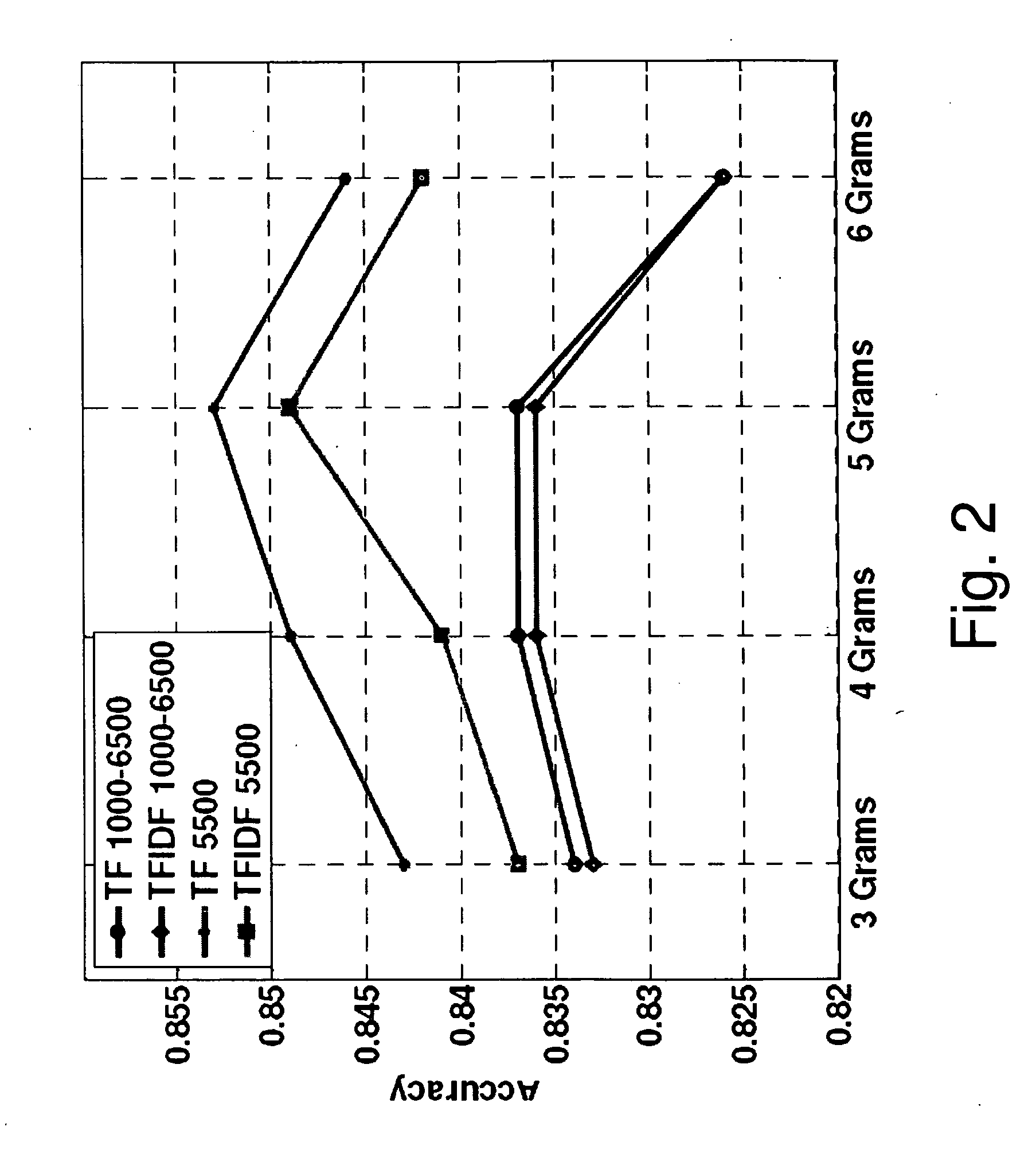Unknown malcode detection using classifiers with optimal training sets
a classifier and training set technology, applied in the field of information system security, can solve the problems of two potential failures, time-consuming, and difficult to detect the presence of malcodes, and achieve the effect of high detection accuracy
- Summary
- Abstract
- Description
- Claims
- Application Information
AI Technical Summary
Benefits of technology
Problems solved by technology
Method used
Image
Examples
Embodiment Construction
[0074]FIG. 1 schematically describes the process for detecting the type of the code (benign or malicious) of a file. A file (101) which can be anywhere on a network e.g.: router, computer . . . and which while being check and parsed (103) to generate a set of n-grams (105). Each n-gram (for example 107) will be submitted to a classifier algorithm (111) which will define according to a prior learning of n-grams describing malicious code (MC) and benign code (BC) from a set of learning files (113). The answer (115) of the classifier is “Malicious code” (M) or “Benign code” (B) for the n-gram or a set of n-grams. If at least one n-gram is detected as MC the file is considered as a malicious file.
[0075]Data Set Creation
[0076]A data set of malicious and benign executables for the Microsoft Windows operating system was build, as this is the system most commonly used and most commonly attacked. This collection is assumed to be large. The malicious files were downloaded from the VX Heaven w...
PUM
 Login to View More
Login to View More Abstract
Description
Claims
Application Information
 Login to View More
Login to View More - R&D
- Intellectual Property
- Life Sciences
- Materials
- Tech Scout
- Unparalleled Data Quality
- Higher Quality Content
- 60% Fewer Hallucinations
Browse by: Latest US Patents, China's latest patents, Technical Efficacy Thesaurus, Application Domain, Technology Topic, Popular Technical Reports.
© 2025 PatSnap. All rights reserved.Legal|Privacy policy|Modern Slavery Act Transparency Statement|Sitemap|About US| Contact US: help@patsnap.com



